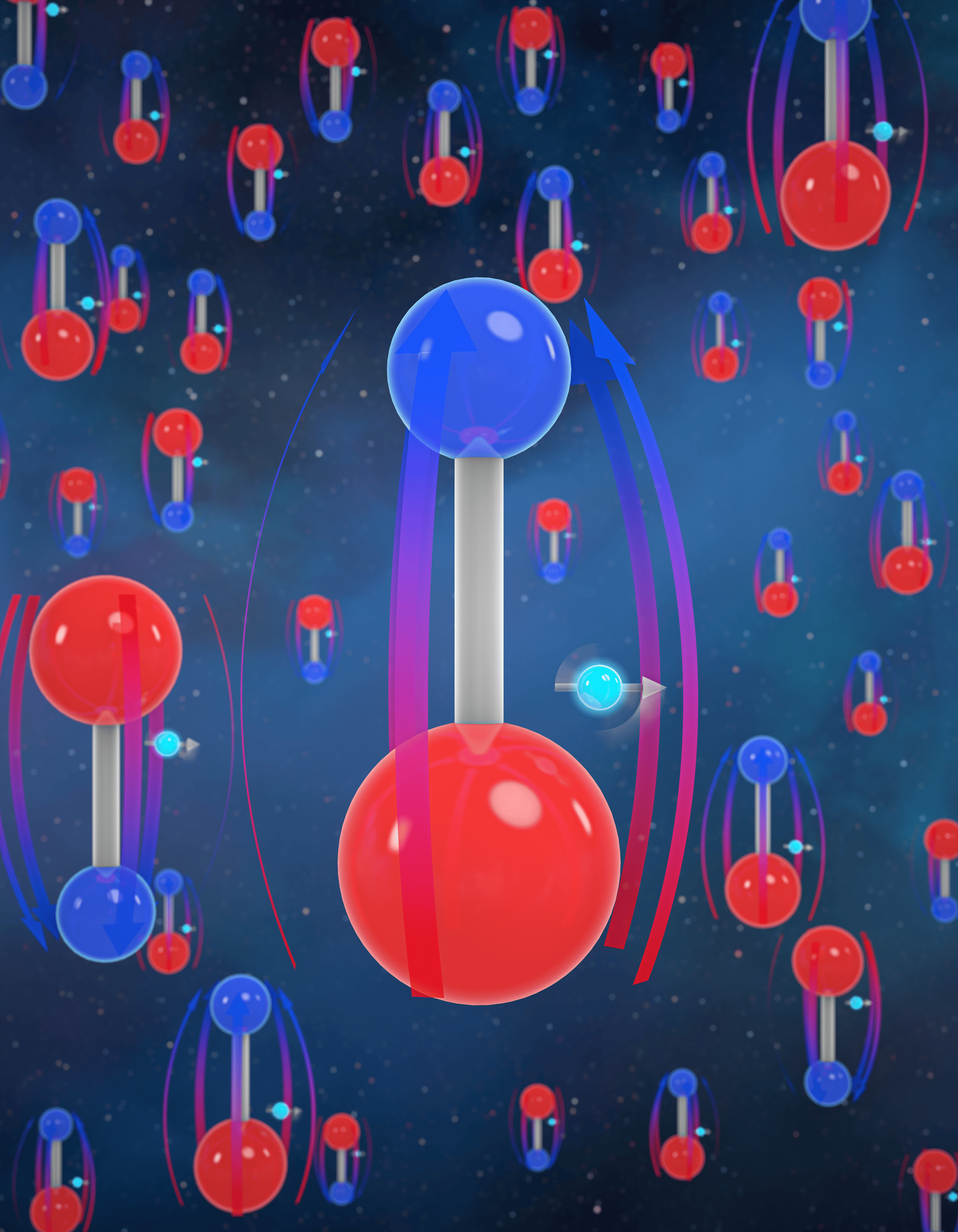
A new measurement confirms that electrons, the building blocks of matter, are remarkably spherical. Physicists have reached an unprecedented level of precision in determining the shape of these subatomic particles, shedding light on the profound puzzle of why our universe is filled with matter rather than antimatter.
Any deviation in the electron’s shape could indicate an asymmetry in the laws of nature, offering a potential explanation for this fundamental cosmic feature. Alas, this is not the case since the electron is near-perfectly round.
Yet this research is still important. Many times, science is about knowing where to investigate but also when it’s time to look elsewhere. These findings suggest the latter, pointing scientists toward other avenues that may explain the universe’s asymmetry.
The imbalance at the heart of the universe
In the early stages of the universe, protons, neutrons, and electrons, together with their antimatter counterparts, coalesced. As the universe expanded and cooled, these particles annihilated each other, leaving behind mostly photons.
If the universe were perfectly symmetrical, with equal amounts of matter and antimatter, only light would remain, and life as we know it would not exist. However, the existence of an imbalance—a surplus of protons, neutrons, and electrons—led to the formation of atoms, stars, and eventually, life itself.
Scientists have long grappled with the question of why this asymmetry exists, as our current mathematical theories demand symmetry.
To explore the origins of this asymmetry, experimental physicists at the National Institute of Standards and Technology (NIST) and the University of Colorado Boulder’s JILA research group have focused their attention on electrons. These fundamental particles play a crucial role in understanding the symmetry of the universe.
By investigating the electric dipole moment of electrons (eEDM)—a measure of the particle’s charge distribution—scientists can uncover evidence of asymmetry. A nonzero measurement would indicate that the electron is more elliptical than perfectly round. However, the precise extent of this deviation had remained unknown.
Probing the shape of electrons
The team led by Nobel Prize laureate and physicist Eric Cornell set a new record for measuring the eEDM with unprecedented precision, surpassing previous efforts by a factor of 2.4. To get an idea of how round the electron is, if you were to magnify an electron to the size of planet Earth, its deviation from a perfect sphere would be smaller than the size of an atom. It’s pretty darn round!
To achieve such accuracy, the researchers employed innovative techniques on molecules of hafnium fluoride. By subjecting these molecules to a strong electric field, the scientists observed the behavior of the trapped electrons.
If the electrons were slightly egg-shaped rather than perfectly round, the electric field would exert torque on them, similar to how gravity causes an upright egg to topple over.
Utilizing ultraviolet lasers, researchers removed electrons from the molecules, creating a group of positively charged ions, which they subsequently trapped. By alternating the electromagnetic field around the trap, the team prompted the molecules to either align or not align with the field. They then used lasers to measure the energy levels of the two groups.
Divergent energy levels would suggest the presence of asymmetry in the electrons. But these experiments revealed that the energy levels remained the same, indicating that, to the best of our current measurement capabilities, electrons are spherical.
What then can explain the fact that the universe is overwhelmingly comprised of matter? Theoretical physicists have proposed that certain subatomic particles might have tipped the scales in favor of matter during the Universe’s early expansion. If these particles exist, they would intermittently appear and disappear in the vicinity of electrons, causing them to become slightly oblong — but this doesn’t seem to be the case.
“We need to fix our math to be closer to reality,” said Tanya Roussy, a graduate student in Cornell’s research group at JILA. “We’re looking for places where that asymmetry might be, so we can understand where it came from. Electrons are fundamental particles, and their symmetry tells us about the symmetry of the universe.”
Although the search for a nonzero eEDM measurement continues, the researchers emphasize the importance of collaboration among scientists worldwide. As long as scientists remain committed to measuring the truth, someone will eventually discover the answers.
And while a nonzero measurement of eDM would have been groundbreaking, this achievement demonstrates the significance of precision measurements conducted outside of expensive particle accelerators. It shows that tabletop experiments are still very useful in particle physics — a field in which multi-billion-dollar particle accelerators like the Large Hadron Collider in Geneva usually steal headlines.
The recent confirmation of electrons’ exceptional roundness adds another layer to the puzzle of the universe’s matter-antimatter imbalance. By ruling out asymmetry in the shape of electrons, physicists deepen the enigma of how matter gained the upper hand during the universe’s formation.
The absence of evidence for hidden particles challenges our understanding of the cosmos and opens doors for further investigations into particles with even larger masses.
The findings appeared in the journal Science.









